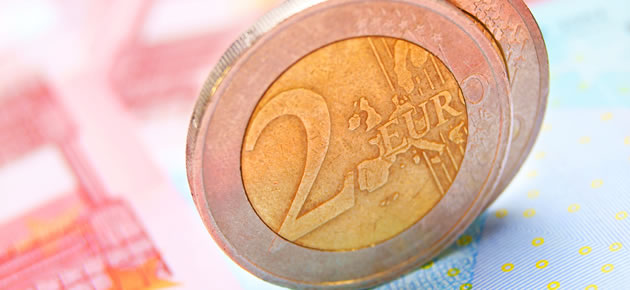Although yesterday’s German GDP data for 2013 fell slightly short of estimates, indicating that growth slowed in the fourth quarter, the Euro was able to surge against the Australian Dollar overnight as the South Pacific asset posted widespread declines.
The ‘Aussie’ tumbled against all of its most traded peers as the odds of the Reserve Bank of Australia issuing an additional rate cut increased after the Australian economy was shown to have lost 22,600 positions in December.
Economists had forecast that employment would increase by 10,000.
November’s employment gain was also negatively revised to 15,400.
While the unemployment rate held at a four-year low of 5.8 per cent at the close of last year the participation rate edged to 64.6 per cent from 64.8 per cent and full time employment fell by 31,600 positions.
If the participation rate hadn’t declined the unemployment rate would have climbed to 6.1 per cent.
The result was a particularly disappointing one and made 2013 the worst year of full-time employment losses for 21 years.
Industry expert Annette Beacher observed; ‘Of the 55,000 jobs added since December 2012, all new jobs have been part-time, while full-time went backwards to the tune of 68,000.’
In the aftermath of the data publication the Australian Dollar plummeted to a three-year low against the US Dollar and dropped against peers like the Pound and Euro.
Traders increased bets that the result would inspire the RBA to cut the overnight cash-rate target and economist Alex Joiner stated; ‘The figures were a little bit nastier than expected. Talk of the RBA raising rates later this year seems premature. Historically the Reserve Bank has never dropped its easing bias while the unemployment rate has been rising.’
‘Aussie’ losses were slightly tempered by a report showing a better-than-forecast annual rise in foreign direct investment in China, Australia’s main trading partner.
As European trading began the EUR/AUD pairing was little affected by a report confirming that the German consumer price index climbed by 0.4 per cent in December, month on month, and 1.4 per cent on the year.
EUR/AUD Forecast
Our forecast for the EUR/AUD exchange rate is that unless today’s final CPI data for the Eurozone delivers a surprise the Euro is likely to continue trading higher against the Australian Dollar into the weekend.
While today’s US inflation data will be of interest, investors will also be looking to tomorrow’s construction output report for the Eurozone.
Output fell by 1.2 per cent in October, month-on-month, and declined 2.4 per cent year-on-year. An increase in production would lend the Euro additional support.
Euro (EUR) Exchange Rates
[table width=”100%” colwidth=”50|50|50|50|50″ colalign=”left|left|left|left|left”]
Currency, ,Currency,Rate ,
Euro, ,US Dollar,1.3605,
,US Dollar,1.3605,
Euro, ,British Pound,0.8336 ,
,British Pound,0.8336 ,
Euro, ,Australian Dollar,1.5495 ,
,Australian Dollar,1.5495 ,
Euro, ,New Zealand Dollar,1.6367 ,
,New Zealand Dollar,1.6367 ,
Euro, ,Canadian Dollar,1.4896 ,
,Canadian Dollar,1.4896 ,
[/table]



